10 Content Marketing Strategies to Skyrocket Your Brand’s Engagement

Have you ever wondered why some brands seem to effortlessly attract and retain loyal customers while others struggle to make an impact? The secret often lies in their content marketing strategy. In today’s digital-first world, content isn’t just king—it’s the entire kingdom, and the brands that rule this realm understand that strategic content creation is what separates market leaders from the forgettable crowd.
Content marketing generates three times as many leads as traditional marketing while costing 62% less. Yet, despite these compelling statistics, many businesses still approach content creation haphazardly, without a cohesive strategy to guide their efforts.
Whether you’re just starting your content marketing journey or looking to refine your existing approach, the strategies we’ll explore today will transform how you connect with your audience and drive meaningful engagement.
What Are Content Marketing Strategies and Why Do They Matter?
Content marketing strategies are systematic approaches to planning, creating, distributing, and analyzing content that aligns with specific business objectives while meeting audience needs. They’re the roadmap that ensures every blog post, video, podcast, or social media update serves a purpose rather than simply adding to the digital noise.
Unlike traditional advertising that interrupts consumers, content marketing attracts them by providing value first. It’s the difference between shouting at customers to notice you and becoming a trusted resource they actively seek out.
When implemented effectively, content marketing strategies build trust, establish authority, nurture relationships, and ultimately drive conversions—all while educating and entertaining your audience. But achieving these results requires more than just producing content; it demands strategic thinking and deliberate execution.
1. Define Your Content Marketing Goals and KPIs
Before diving into content creation, you need absolute clarity on what you’re trying to achieve. Are you looking to increase brand awareness, generate leads, boost conversions, improve customer retention, or establish thought leadership?
Each goal requires a different content approach. For awareness, you might focus on highly shareable, emotion-triggering content. For lead generation, you’ll need valuable gated resources. For conversions, case studies and product comparisons might take priority.
Once you’ve identified your goals, attach specific Key Performance Indicators (KPIs) to measure success:
- Awareness: Traffic, social shares, brand mention volume
- Engagement: Time on page, bounce rate, comment count, social interaction
- Lead generation: Form completions, email sign-ups, content downloads
- Conversion: Click-through rates, conversion rate, sales attributed to content
- Retention: Repeat visitors, subscription renewal rates, customer lifetime value
Without these clearly defined metrics, you’ll have no way to determine if your content marketing strategy is actually working or just keeping your team busy.
2. Develop Deep Audience Understanding Through Personas
The foundation of any effective content marketing strategy is an intimate understanding of your audience. Generic content created for “everyone” typically resonates with no one. Instead, develop detailed buyer personas that capture who your ideal customers are, what challenges they face, and how they make decisions.
DollarShaveClub demonstrates the power of audience understanding. They recognized that their target audience—primarily millennial men—valued convenience, affordability, and straightforward messaging. This insight led to their viral launch video that generated 12,000 orders within 48 hours of release.
To build meaningful personas:
- Analyze your existing customer data for demographic patterns
- Conduct surveys and interviews with current customers
- Review support and sales conversations for recurring pain points
- Study social listening data to understand how they talk about your industry
- Track on-site behavior to see which content resonates most
The more specific your personas, the more targeted your content can be. Don’t stop at basic demographics—dig into psychographics like values, interests, and content consumption habits.
3. Create a Consistent Brand Voice That Resonates
Your brand voice is the personality that comes through in all your content. It differentiates you from competitors and creates an emotional connection with your audience. Consistency in voice builds recognition and trust—when people can predict how you’ll communicate, they’re more likely to form a relationship with your brand.
Mailchimp excels at maintaining a distinctive brand voice that’s conversational, helpful, and occasionally whimsical. Their voice guidelines are so well-defined that content created by dozens of writers still feels cohesively “Mailchimp.”
To develop your brand voice:
- Identify core brand values – What principles guide your company?
- Select voice characteristics – Are you authoritative, friendly, inspirational, or technical?
- Create a voice chart – Document specific dos and don’ts for your content creators
- Develop tone variations – How does your voice adapt across different channels or situations?
“Your brand voice should be authentic to who you are as a company while resonating with what your audience expects and appreciates,” says Ann Handley, content marketing expert and author of “Everybody Writes.”
4. Embrace Strategic Storytelling
Humans are hardwired for stories. We’ve been sharing them around campfires for thousands of years, and our brains are literally designed to respond to narrative structures. Stories make information more memorable, relatable, and emotionally impactful—exactly what you need your content to be.
Blendtec’s “Will It Blend?” video series perfectly demonstrates the power of storytelling in content marketing. By creating a simple narrative premise—testing their blenders’ power on unusual items—they increased sales by 700% while building massive brand awareness through entertaining content.
Effective content storytelling includes:
- A clear protagonist – Often your customer facing a challenge
- Conflict or tension – The problem your product or service helps solve
- A narrative arc – The journey from problem to solution
- Emotional elements – Aspects that trigger feeling and connection
- Brand relevance – A natural tie to your values or offerings
Storytelling doesn’t just work for B2C brands. B2B company Salesforce regularly uses customer success stories to demonstrate their product’s impact through narrative rather than feature lists.
5. Implement a Strategic Content Calendar
Consistency is crucial for content marketing success. A content calendar transforms your strategy from abstract ideas into a concrete plan of action, ensuring steady publication without last-minute scrambles.
Your content calendar should balance several factors:
- Content types – Mix of formats (blogs, videos, infographics, etc.)
- Topics – Coverage across your content pillars and customer journey stages
- Channels – Where each piece will be published and promoted
- Seasonal relevance – Alignment with industry events, holidays, or trends
- Content goals – How each piece supports your overall objectives
“The content calendar isn’t just about planning when to publish—it’s about orchestrating your entire content ecosystem to work harmoniously,” notes content strategist Jay Baer.
Tools like Trello, Asana, or CoSchedule can help manage your calendar, but even a simple spreadsheet works if it includes publication dates, responsible team members, status updates, and distribution channels.
6. Optimize Content for Search Engines and Users
The most brilliant content is worthless if no one finds it. SEO-friendly web design and content optimization remain essential components of any content marketing strategy, helping your material rank for relevant search terms and attract organic traffic.
SEO and user experience are now inseparable—search engines prioritize content that genuinely satisfies user intent. This means optimization requires balancing keyword strategy with readability, engagement, and value.
For effective SEO content:
- Research keywords thoughtfully – Focus on terms your audience actually searches for, including long-tail variations
- Organize content around topics – Build comprehensive resource clusters rather than isolated keyword-focused pieces
- Optimize on-page elements – Include keywords naturally in titles, headings, meta descriptions, and opening paragraphs
- Create scannable content – Use subheadings, bullet points, and short paragraphs for better user experience
- Incorporate multimedia – Add images, videos, or infographics to increase engagement signals
HubSpot’s comprehensive guides exemplify this approach—they’re thoroughly optimized for search while providing exceptional user value through detailed, well-structured content.
7. Diversify Content Formats for Maximum Reach
Different audience segments consume content differently. Some prefer reading in-depth articles, others would rather watch videos, and some learn best through interactive experiences. By diversifying your content formats, you can reach wider audiences and reinforce your message across multiple learning styles.
Duolingo skillfully employs format diversity in their content marketing. They maintain an educational blog for language tips, create short-form videos for TikTok and Instagram, produce a podcast for auditory learners, and develop interactive challenges that showcase their core product experience.
Consider incorporating these formats into your strategy:
- Long-form content – Comprehensive guides, white papers, and detailed articles
- Visual content – Infographics, data visualizations, and branded images
- Video content – Tutorials, behind-the-scenes looks, interviews, and demos
- Audio content – Podcasts, webinars, and audio versions of written content
- Interactive content – Quizzes, calculators, assessments, and configurators
“Repurposing your core content into multiple formats isn’t just efficient—it extends your reach to audiences who might never engage with your primary format,” explains marketing educator Amy Porterfield.
8. Leverage Social Media as a Content Amplification Engine
Social media platforms serve as powerful distribution channels for your content, but each platform has its own content format preferences, audience behaviors, and algorithmic quirks. Successful social media marketing requires platform-specific strategies rather than blanket cross-posting.
Starbucks exemplifies strategic social media content marketing. Their Instagram highlights visually appealing products and lifestyle imagery, while their Twitter focuses on quick conversations and timely updates. On YouTube, they dive deeper with behind-the-scenes content about sustainability and company initiatives.
For effective social content distribution:
- Tailor content to each platform – Adapt format, length, and messaging to fit platform norms
- Schedule for optimal timing – Post when your specific audience is most active
- Encourage engagement – Include calls to action that prompt comments, shares, and interaction
- Participate in conversations – Respond to comments and join relevant discussions
- Track platform-specific metrics – Measure what resonates on each channel to refine your approach
Remember that social media isn’t just for promotion—it’s for community building. The most successful brands use 80% of their social content to educate, entertain, or engage, and only 20% for direct promotion.
9. Implement Email Marketing for Content Distribution
Despite the rise of new channels, email remains an exceptionally powerful content distribution method with an average ROI of $36 for every $1 spent. Unlike social platforms, email gives you direct access to your audience without algorithmic gatekeepers.
Email marketing tools enable sophisticated content delivery strategies, from basic newsletters to complex automated sequences triggered by user behavior.
The Skimm has built a media empire through email-distributed content. Their daily newsletter delivers news summaries in a conversational tone perfectly suited to their millennial audience. This content-first approach has earned them over 7 million subscribers and numerous brand partnership opportunities.
To maximize email’s effectiveness for content marketing:
- Segment your audience – Send different content to different subscriber groups based on interests or behaviors
- Personalize beyond first names – Include content recommendations based on previous engagement
- Test subject lines rigorously – Even small improvements in open rates significantly impact content reach
- Design for skimmability – Use clear headlines, bullet points, and prominent call-to-action buttons
- Analyze engagement patterns – Track which content topics and formats generate the most clicks
10. Analyze Performance and Iterate Continuously
The most sophisticated content marketing strategies evolve based on performance data. Regular analysis helps you identify what’s working, what’s not, and where to focus your resources for maximum impact.
Netflix’s content strategy exemplifies this approach. They meticulously analyze viewing data to inform not only their original programming decisions but also their marketing content—from which show images appear for different users to which content themes they emphasize in their blog and social channels.
For effective content analysis:
- Review performance against established KPIs – Are you meeting the goals you set?
- Identify patterns across successful content – What topics, formats, or distribution channels consistently perform well?
- Conduct content audits quarterly – Assess your entire content library to find gaps and opportunities
- Track full-funnel metrics – Look beyond surface engagement to conversion impact
- Test methodically – Change one variable at a time to identify what truly drives improvement
Google Analytics remains essential for tracking content performance, but also consider tools like Hotjar for user behavior visualization or BuzzSumo for competitive content analysis.
FAQs About Content Marketing Strategies
How often should we publish new content?
There’s no universal answer—it depends on your resources, audience expectations, and quality standards. Consistency matters more than frequency. Publishing high-quality content on a reliable schedule (whether that’s twice daily or twice monthly) builds audience trust and search engine authority. Never sacrifice quality for quantity.
How long does it take for content marketing to show results?
Content marketing is a long-term strategy, not a quick fix. Initial engagement metrics may appear within weeks, but meaningful business results typically take 6-9 months to materialize. The compounding effect of content is powerful—many successful blogs report that 70-80% of their traffic comes from posts published more than a month ago.
Should we focus on creating new content or updating existing content?
Both have value. New content expands your topical coverage and keeps your presence fresh, while updating high-performing older content preserves and enhances existing search equity. Most mature content programs operate on a 70/30 split—70% new content creation and 30% updating and optimizing existing assets.
How do we measure content marketing ROI?
Start by tracking the customer journey from content interaction to conversion. Attribution models help connect content touchpoints to revenue, though perfect attribution remains challenging. Calculate ROI by comparing content program costs (creation, distribution, technology) against attributed revenue or value-based metrics like lead quality improvement or customer acquisition cost reduction.
Is AI-generated content effective for content marketing?
AI tools can supplement human creativity but rarely replace it entirely. They’re useful for content research, outline creation, and first-draft generation, but the most effective content still benefits from human strategic thinking, emotional intelligence, and brand voice alignment. The best approach combines AI efficiency with human creativity and subject matter expertise.
The Future of Content Marketing Strategy
As we look ahead, several emerging trends will reshape content marketing strategies:
- Hyper-personalization – Content experiences tailored to individual user data and behaviors
- Voice and visual search optimization – Content structured to answer conversational queries and image searches
- Immersive experiences – Augmented and virtual reality content that creates memorable brand interactions
- Content atomization – Breaking comprehensive pieces into smaller, platform-specific formats
- AI-assisted creation and optimization – Smarter tools for content generation and performance prediction
Digital marketing automation will continue to evolve, allowing for more sophisticated content delivery based on user signals and journey stages.
Conclusion: Building Your Content Marketing Strategy
Effective content marketing isn’t about producing more content—it’s about producing the right content, for the right people, in the right places, at the right times. The strategies we’ve explored provide a framework for making those critical decisions systematically rather than randomly.
Remember that content marketing is both an art and a science. The artistic elements—creativity, storytelling, voice development—create emotional connections with your audience. The scientific elements—measurement, optimization, strategic planning—ensure those connections translate to business results.
While trends and technologies will evolve, the fundamental principle of content marketing remains constant: provide genuine value to your audience before asking for anything in return. When you consistently deliver helpful, entertaining, or inspiring content that addresses real audience needs, engagement naturally follows.
Start by implementing just one or two of these strategies rather than attempting a complete overhaul. Build momentum with small wins, measure results diligently, and continuously refine your approach. Content marketing is a marathon, not a sprint—and the brands that maintain their strategic focus while remaining adaptable will ultimately win the race.






